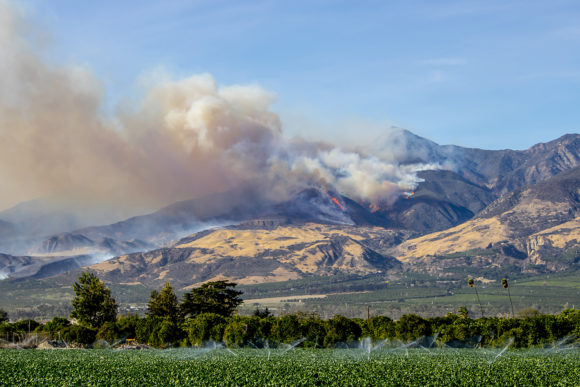Insurers may be non-renewing more in wildfire-prone areas of California, sending an increasing number of people to the residual market or to surplus lines insurers.
A report released on Monday shows that market shares of the FAIR Plan, the state’s residual insurance market, and the surplus lines market, are on the rise, as people look for coverage, and look for more affordable coverage.
A new report from the Rand Corp. is part of California’s Fourth Climate Change Assessment, an amalgam of thirty-something state-sponsored reports.
The report from the Santa Monica, Calif.-based think tank looks at two study areas: the foothills of the Sierra Nevada mountains in Northern California and western San Bernardino County in Southern California.
Focusing on two areas as opposed to the entire state allowed authors of the report to conduct a more detailed analysis. The Sierra Foothills study area covers 1.9 million acres of land between Sacramento and Lake Tahoe and spans parts of three counties—Nevada, Placer, and El Dorado. The San Bernardino study area covers 0.86 million acres of land in the western, more populated portion of San Bernardino County.
Read the full report on Insurance Journal’s Research and Trends section.
The report shows the insurer-initiated policy nonrenewal rate is on the rise in the wildfire-prone ZIP codes in these areas in the state.
The insurer-initiated non-renewal rate was 1.3 percent in the low risk portions of the Sierra Foothills area compared with 2.9 percent in high risk areas. The rates went from 1.6 percent to 1.7 percent in the San Bernardino area.
Adding in other factors and the overall increase from low to high risk areas was just under a cumulative 1 percent. While that’s not that big of a difference, it does indicate a trend, according Lloyd Dixon, one of the authors of the study.
“It’s statistically significant in that the data we have says there is a difference,” he said. “I wouldn’t call that a point of concern. So far things seem to be working OK, although there are signs, there are things you should pay attention to that could signal trouble in the future.”
There is one big signal to take note of, especially for homeowners and agents working to find insurance for homeowners.
“Admitted insurers are less interested in those high-risk areas,” Dixon said.
The report also shows that homeowners in high-risk areas are purchasing less coverage relative to structure value and selecting higher deductibles than homeowners in low-risk ZIP codes.
“It drops by 10 percentage points in the high risk areas,” Dixon said.
That may be because premiums in the higher-risk areas are higher and have been growing more rapidly in recent years than those in lower-risk areas, the report shows.
Premiums were on average roughly $1 higher per $1,000 in the high risk zones.
The rate per $1,000 of coverage in the admitted market was $2.60 in the lower risk areas for both the Sierra Foothills area and $2.94 in the San Bernardino area.
The report shows that in the ZIP codes that currently face the highest fire risk, the market share of the admitted insurers is expected to drop by 5 percentage points on average by 2055, and the rate per $1,000 of coverage in the admitted market is projected to rise by 18 percent.
The coverage-to-value ratio is expected to fall by 6.5 percentage points and the deductible to increase by $121.
The report ties the trends to climate change.
The report notes that worsening drought, higher temperatures and lower humidity have made for more severe wildfire seasons throughout the state.
The report offers as an example 2017, a particularly bad year for wildfires.
“Over 1.4 million acres burned in the state, and 10,800 residential and commercial structures were destroyed—the largest number of structures destroyed since recordkeeping started in 1989,” the report states. “Climate change and population growth are expected to make matters worse, unless current behaviors and practices change.”
Related:
- California’s Plan to Help Utilities Deal With Fire Costs
- California’s Plan for PG&E Bonds to Cover Fire Damages in Final Stages
- Changes in California Fire-Liability Law Looking Less Likely
Topics California Catastrophe Natural Disasters Wildfire Homeowners Climate Change
Was this article valuable?
Here are more articles you may enjoy.



 German Insurtech Wefox to Replace CEO After Board Rejects Mubadala Sales Plan
German Insurtech Wefox to Replace CEO After Board Rejects Mubadala Sales Plan  Changes at American Coastal Insurance After Florida OIR Action on ‘No-Fly List’
Changes at American Coastal Insurance After Florida OIR Action on ‘No-Fly List’  Microsoft Tells Texas Agencies They Were Exposed in Russian Hack
Microsoft Tells Texas Agencies They Were Exposed in Russian Hack  US P/C Insurers Post Best Q1 Underwriting Result In 17 Years
US P/C Insurers Post Best Q1 Underwriting Result In 17 Years 

